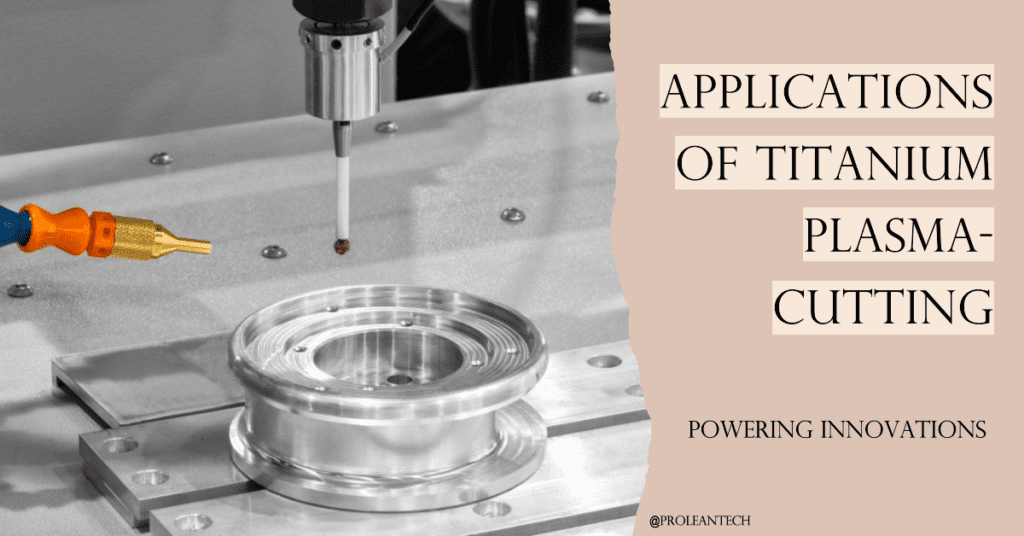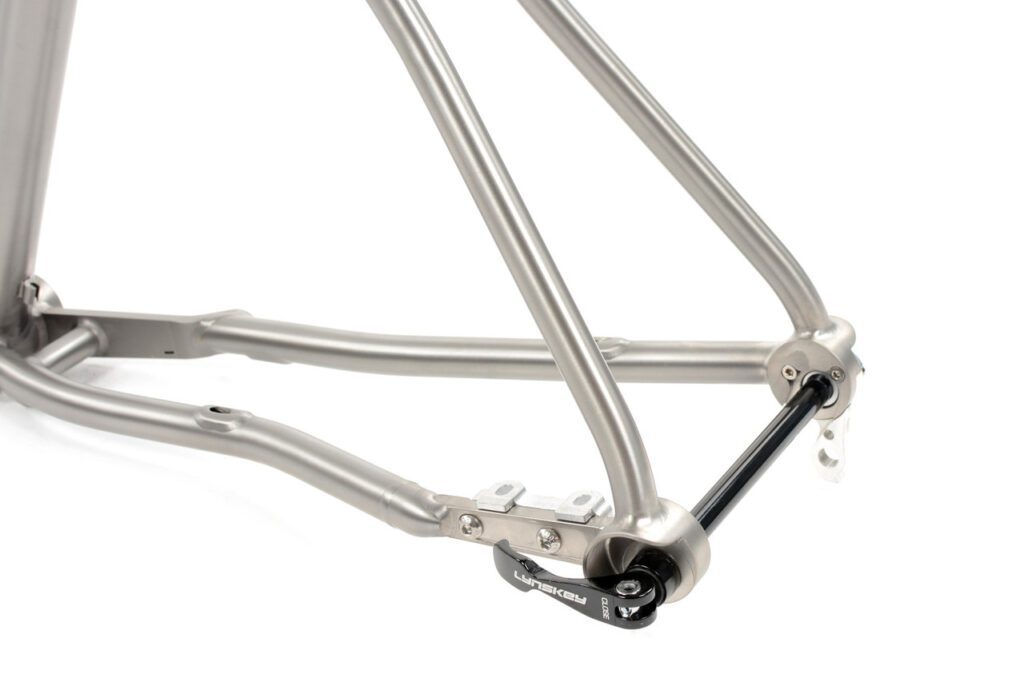
Recognized for its unique combination of strength, lightness, and corrosion resistance, titanium has solidified its place as a sought-after material across a variety of industries. The implementation of plasma cutting process—a method lauded for its ability to cut swiftly and economically through thick materials—has further increased the versatility and adaptability of titanium. In this article, we’ll explore the many uses of plasma cutting titanium, with a particular focus on its application within various sectors, such as the aerospace, medical, automotive, and sports industries, to name a few.
By probing into the capabilities of plasma-cutting titanium, we aim to highlight the transformative role of this technology in a range of applications, providing a closer look at how it’s reshaping the industrial landscape.
Aerospace and Aviation: Soaring High with Titanium
The aerospace and aviation industries have a long-standing relationship with titanium. The material’s high strength-to-weight ratio, coupled with excellent heat and corrosion resistance, makes it an ideal choice for several aerospace applications. By incorporating plasma cutting into the manufacturing process, companies can produce titanium components at an unprecedented speed and cost-effectiveness.
1. Engine Components
Within the realm of aviation, engines endure extreme conditions and temperatures. As such, they demand materials that can not only withstand these harsh conditions but also maintain optimal performance. Titanium fits these requirements perfectly. When shaped using plasma cutting, titanium can be crafted into complex, robust engine parts swiftly and efficiently.
Here’s a brief overview of some key titanium components in an aircraft engine:
- Compressor blades and disks: These components are constantly subjected to high temperatures and stress, making the heat resistance of titanium an invaluable quality.
- Engine casings: Titanium’s low weight and high strength make it an ideal material for these parts.
2. Airframes
Titanium’s properties extend beyond the engine, providing significant benefits to aircraft airframes as well. Plasma-cut titanium components are lighter and stronger, contributing to enhanced fuel efficiency and overall aircraft performance.
Table 1: Applications of Titanium in Aerospace and Aviation
| Components | Material Benefits | Role of Plasma Cutting |
|---|---|---|
| Compressor blades and disks | Heat resistance, high strength | Enables complex, efficient cutting |
| Engine casings | Low weight, high strength | Allows quick, precise shaping |
| Airframes | Resistance to corrosion, high strength-to-weight ratio | Facilitates cutting of large, thick pieces |
Related to: The Diverse Applications of Aluminum Plasma Cutting
Medical Industry: Healing with Titanium
In the realm of healthcare, titanium’s significance cannot be overstated. It’s widely used due to its biocompatibility—meaning it’s not harmful or toxic to living tissue—non-magnetic properties, and resistance to corrosion.
1. Orthopedic Implants
Orthopedic implants, such as hip and knee replacements, bone plates, and screws, often employ titanium. Plasma-cutting technology allows for the accurate customization of these implants, accommodating each patient’s unique anatomical needs and contributing to improved treatment outcomes.
2. Surgical Instruments
Surgical instruments represent another area where titanium—and more specifically, plasma-cut titanium—comes into play. These tools must offer longevity, reliability, and safety in various operative environments, including those utilizing MRI technology. Titanium’s non-magnetic properties make it an excellent choice for such settings.
Bulleted List: Applications of Titanium in the Medical Industry
- Orthopedic implants (hip and knee replacements, bone plates, screws)
- Surgical instruments (scalpels, forceps, tweezers)
- Dental implants
- Pacemaker cases
Automotive Industry: Driving Forward with Titanium
The automotive industry is another field that benefits significantly from the advantages offered by titanium and plasma cutting. High-performance vehicles, in particular, leverage titanium for its lightweight nature, strength, and heat resistance.
1. Exhaust Systems
Titanium is a common material for performance exhaust systems due to its excellent resistance to heat and corrosion. Plasma cutting allows for the manufacture of exhaust components with intricate designs, such as bends and flanges, optimizing vehicle performance and efficiency.
2. Suspension Components
In high-performance vehicles, weight reduction is a key consideration. Titanium suspension components, shaped through plasma cutting, provide the needed strength without the weight penalty, leading to improved handling and acceleration.
Table 2: Applications of Titanium in the Automotive Industry
| Components | Material Benefits | Role of Plasma Cutting |
|---|---|---|
| Exhaust systems | Heat and corrosion resistance | Enables manufacturing of intricate designs |
| Suspension components | Low weight, high strength | Allows weight reduction while maintaining strength |
Try Prolean Now!
Sports Equipment: Achieving New Heights with Titanium
In the world of sports equipment, titanium has been a game-changer. From golf clubs to bicycle frames, the use of plasma-cut titanium ensures optimal performance without added weight.
1. Golf Clubs

Titanium is the go-to material for golf club heads due to its strength and lightweight characteristics. Using plasma cutting, manufacturers can create club heads that are both strong and lightweight, aiding in swing speed and distance.
2. Bicycle Frames

High-end bicycles often feature titanium frames due to the material’s ability to withstand stress and resist corrosion. Plasma cutting ensures precise shaping and joining of frame components, providing a smooth ride for cyclists.
Bulleted List: Applications of Titanium in Sports Equipment
- Golf club heads
- Bicycle frames
- Tennis racquet frames
- Wheelchair frames
These diverse applications are a testament to the versatility of titanium plasma cutting, painting a picture of an industrial landscape that’s continually being reshaped and refined by this innovative technology. As industries evolve and new applications emerge, it’s clear that the potential of titanium plasma cutting remains vast and untapped.
Oil and Gas Industry: Fueling Progress with Titanium
When it comes to the harsh and demanding environments of the oil and gas industry, few materials can match the resilience of titanium. The industry employs this strong, corrosion-resistant metal in a variety of applications, where it is subjected to high pressures, extreme temperatures, and corrosive substances.
1. Drilling Equipment
The strength and durability of titanium make it the ideal material for drill bits and other components used in drilling equipment. Plasma cutting plays an essential role in creating complex and precise shapes required in these applications, enabling efficient drilling operations.
2. Pipes and Storage Tanks
Titanium’s exceptional resistance to corrosion also makes it suitable for pipes used in oil and gas transportation and storage tanks. With plasma cutting, custom sizes, and shapes can be achieved to meet specific industry needs.
Table 3: Applications of Titanium in the Oil and Gas Industry
| Application | Material Benefits | Role of Plasma Cutting |
|---|---|---|
| Drilling equipment | Strength and durability | Enables the creation of complex shapes |
| Pipes and storage tanks | Corrosion resistance | Allows customization of sizes and shapes |
Construction: Building Strong with Titanium
The construction industry benefits from the introduction of titanium in a range of applications from structural components to decorative elements.
1. Structural Components
For structures that need to withstand harsh conditions, such as bridges or skyscrapers in coastal regions, titanium is often used for its excellent corrosion resistance and strength. Plasma cutting allows the precise shaping of construction components.
2. Decorative Elements
On a smaller scale, titanium is also employed in creating decorative elements in architecture. Thanks to plasma cutting, intricate designs can be realized, contributing to the aesthetic appeal of a building.
Table 4: Applications of Titanium in Construction Industry
| Application | Material Benefits | Role of Plasma Cutting |
|---|---|---|
| Structural components | Corrosion resistance, strength | Enables precise shaping |
| Decorative elements | Aesthetic appeal | Allows realization of intricate designs |
Summing Up
From medical applications to sports equipment and from aviation to construction, titanium plasma cutting is transforming manufacturing across a wide range of industries. Its ability to deliver precision cuts on a resilient material like titanium opens up a realm of possibilities for future innovations.
At Prolean, we pride ourselves on offering industry-leading plasma-cutting services. We understand the unique advantages titanium brings to various sectors, and our expert team is adept at delivering precision plasma-cut components that meet and exceed your expectations. Whether you’re in aerospace, healthcare, automotive, or sports equipment, our plasma-cutting services promise exceptional results every time. Embrace the power and potential of titanium plasma cutting with Prolean, and let’s shape the future together.
Read more: CNC machining of Titanium & Alloys
FAQs
What are some applications of plasma-cut titanium in the aerospace industry?
In the aerospace industry, titanium is used in the manufacture of engine components, structural elements, and even in the interior cabin for its lightweight, strength, and resistance to heat.
How is titanium used in the medical field?
Titanium’s biocompatibility makes it ideal for surgical instruments, orthopedic implants like hip and knee replacements, and dental implants. Plasma cutting allows for the precise shaping of these medical devices.
Why is titanium used in sports equipment?
Titanium is lightweight yet strong, making it a popular choice in sports equipment such as golf clubs, tennis rackets, and bicycle frames. Plasma cutting allows for the creation of intricate designs without compromising the integrity of the equipment.
What is the role of plasma cutting in the manufacturing of titanium components?
Plasma cutting provides a precise and efficient method for cutting titanium, allowing for intricate designs and complex shapes. This enables the creation of customized components across various industries, from aerospace to healthcare, and sports equipment to construction.




0 Comments